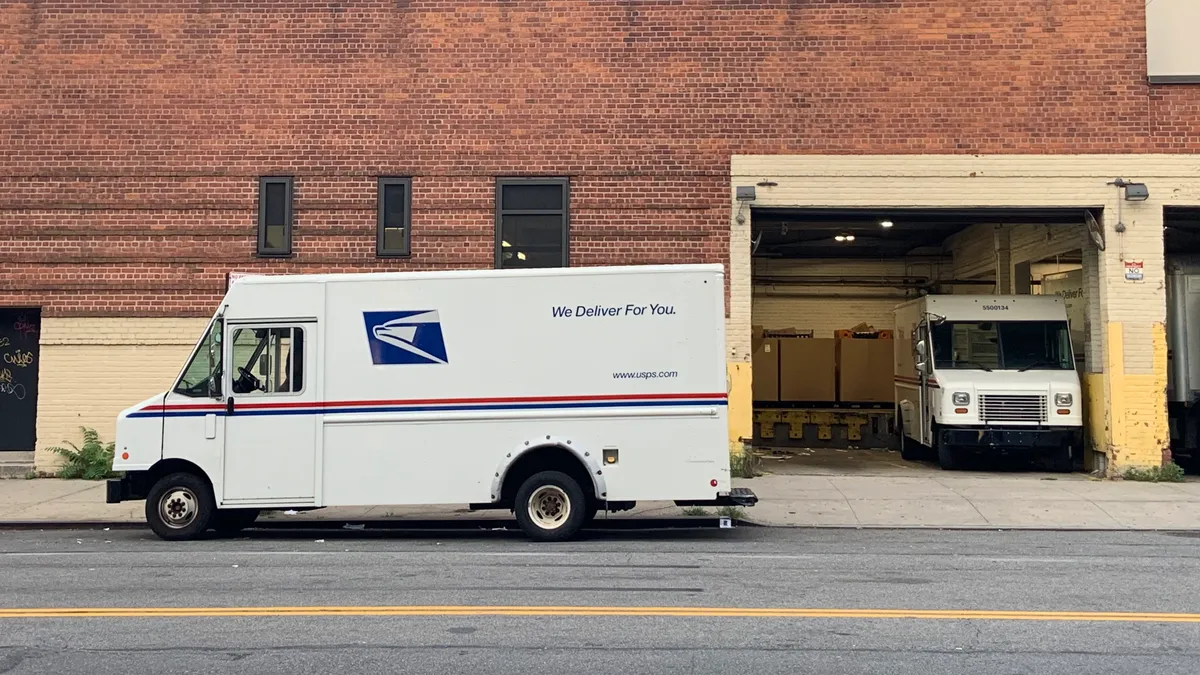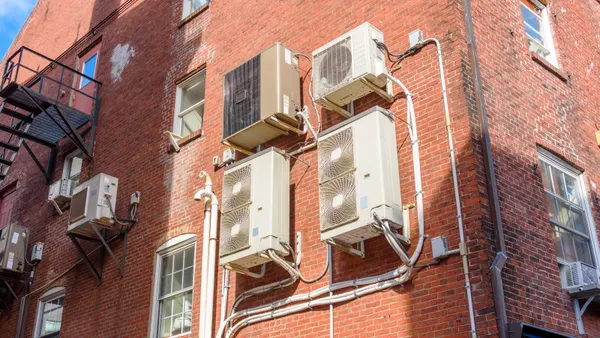Dive Brief:
- Preliminary analysis by the U.S. Government Accountability Office "raises questions" about the way in which the U.S. Postal Service justified a February decision to continue purchasing internal combustion engine mail delivery vehicles, according to testimony before the House Committee on Oversight and Reform on Tuesday.
- Rising gasoline prices, higher fuel efficiency and lower maintenance costs are all factors that could make electric vehicles the best choice for the government's largest civilian fleet, GAO Acting Director of Physical Infrastructure Jill Naamane told lawmakers. And while there are higher upfront costs to going electric, those are declining, she said.
- President Joe Biden has called for transitioning the federal government's vehicle fleet to all-electric, and has taken other steps to boost EV adoption including new fuel economy standards designed to reduce emissions of internal combustion engine vehicles and incentivize automakers to produce more zero-emission cars and trucks.
Dive Insight:
New fuel economy standards announced Friday by the U.S. Department of Transportation’s National Highway Traffic Safety Administration will essentially require automakers to produce more electric vehicles, say experts.
The new Corporate Average Fuel Economy standards will increase fuel efficiency 8% annually for model years 2024-2025 and 10% annually for model year 2026, DOT said. The new standards require a fleet average of 49 miles per gallon by 2026.
"Major automakers are investing billions in zero-emission and electric vehicles, and consumers are buying them in record numbers. Now we just need to step on the accelerator — and the new standards will do exactly that," Center for Climate and Energy Solutions President Nathaniel Keohane said in a statement.
But the new standards do not apply to the USPS fleet, which operates almost 200,000 mail delivery vehicles and is currently purchasing what it calls Next Generation Delivery Vehicles (NGDV).
GAO found that the assumption USPS used in its purchasing analysis "appears to assume the NGDV gas vehicles would achieve a gas mileage efficiency of 15 miles per gallon, which does not account for the use of air conditioning," Naamane said in prepared testimony.
USPS Inspector General Tammy Whitcomb said that "in response to a recently received Congressional request, we have initiated an audit focusing on the Postal Service’s vehicle acquisition process." The review will also consider whether the postal service complied with the National Environmental Policy Act, and will dig into the environmental impact statement supporting the independent agency's analysis.
Naamane said the postal service's analysis used a gas price almost $2 per gallon less than the current national average price of gas, which has been recently pushed up by the Russia's invasion of Ukraine. The analysis also assumed more expensive maintenance costs for electric delivery vehicles, and did not include pollution reductions as benefits of the change.
"We plan to test the effect of changing these assumptions in the model," Naamane said.
In March, the postal service placed an order for 50,000 delivery vehicles — and about 20% of those were EVs, Vicki Stephen, executive director of the USPS' Next Generation Delivery Vehicle program, told lawmakers. But there are constraints on how many can be added, and how quickly, she said.
"Any consideration of our strategic opportunities and challenges must be grounded in a full understanding of not only our unique delivery mission and policy mandates, but also our organizational and financial constraints," Stephen said. "We find that many discussions of postal service fleet electrification have overlooked these irrefutable limitations."
Rapid replacement of the USPS fleet is a priority, said Stephen, as many of the 190,000 delivery vehicles are three decades old, or older.
But the service has 12,500 postal routes more than 70 miles in length "that are not candidates for electrification today without the (cost effective) availability of a denser battery," Stephen told lawmakers in prepared testimony. The recent vehicle order also included 5,000 all-wheel drive internal combustion engine vehicles "in instances where the routes and climate are not favorable" for EVs.
But the length of most postal routes, and their predictability, make postal delivery vehicles "almost perfect" candidates for electrification, said Joel Levin, executive director of Plug in America.
"Currently, there are no electric vehicle delivery vehicles in the existing postal fleet, which is unbelievable," Rep. Stephen Lynch, D-Mass., said. "Our interest in promoting the environmental sustainability of our federal agencies and reducing carbon pollution in our communities demands that we energize and greatly accelerate the agency's transition to electric vehicles."
"Clearly the postal service needs to reevaluate its assumptions," Oversight Commitee Chairwoman Rep. Carolyn Maloney, D-N.Y., said. "The postal service should be doing more to buy more EVs now, including both next generation vehicles and commercially available off-the-shelf models."
According to Whitcomb, the postal service has indicated it could achieve full electrification of its delivery fleet if Congress provided $6.9 billion, though "incentive programs by local utility companies might also help offset costs."















